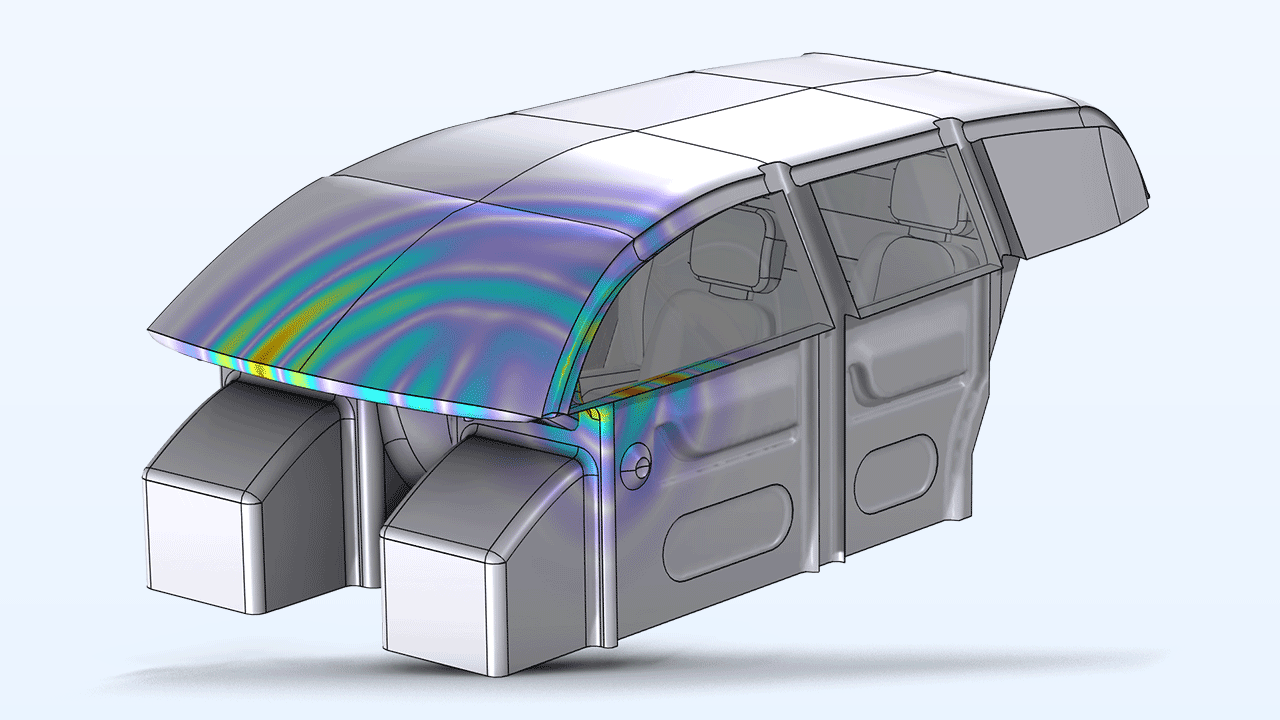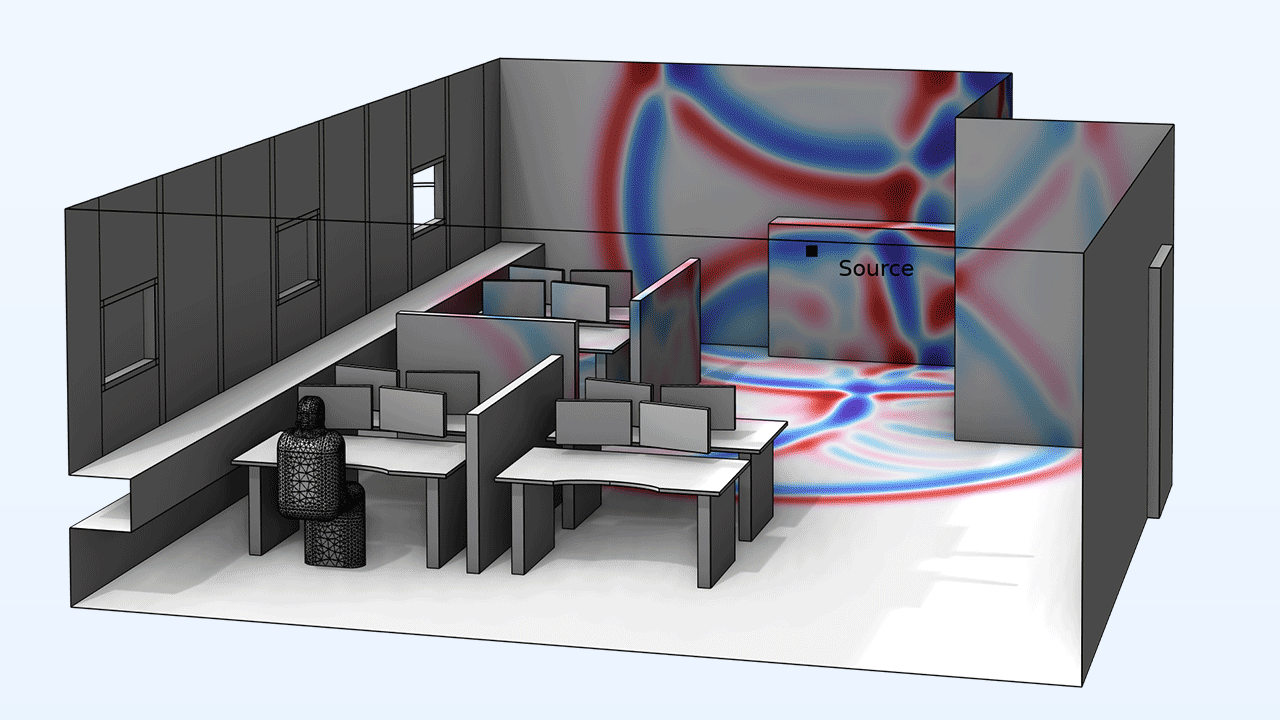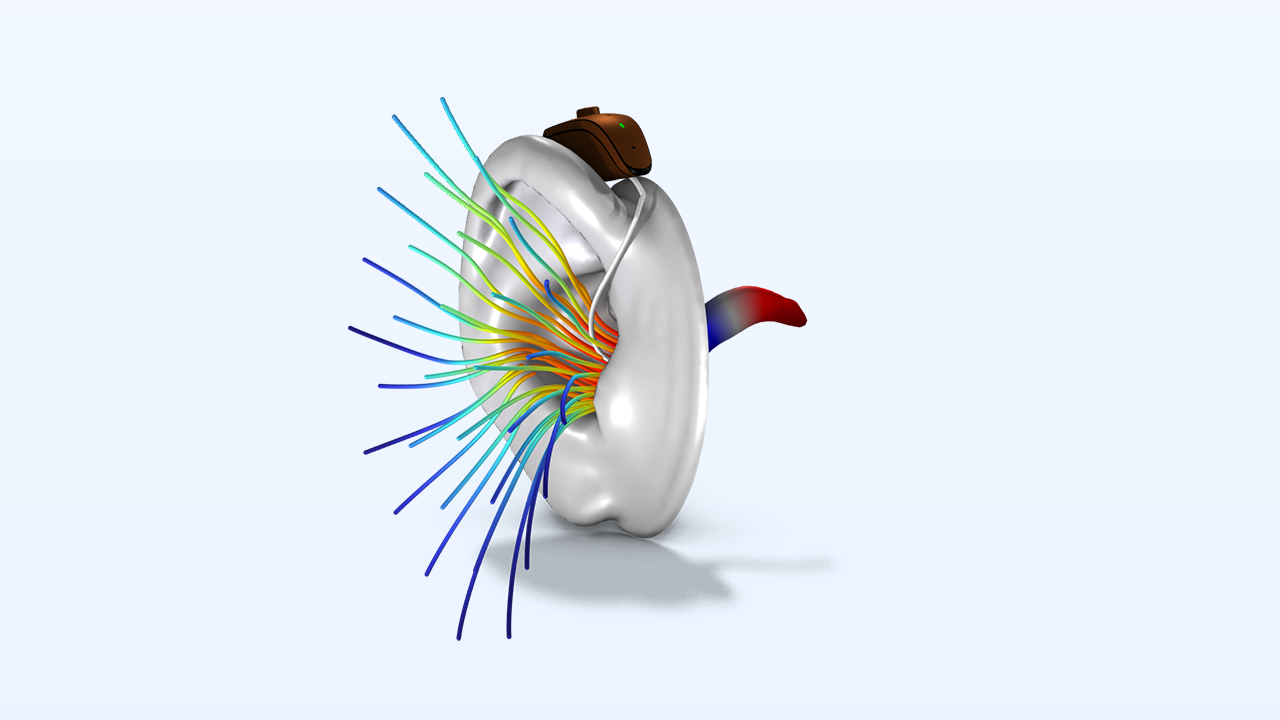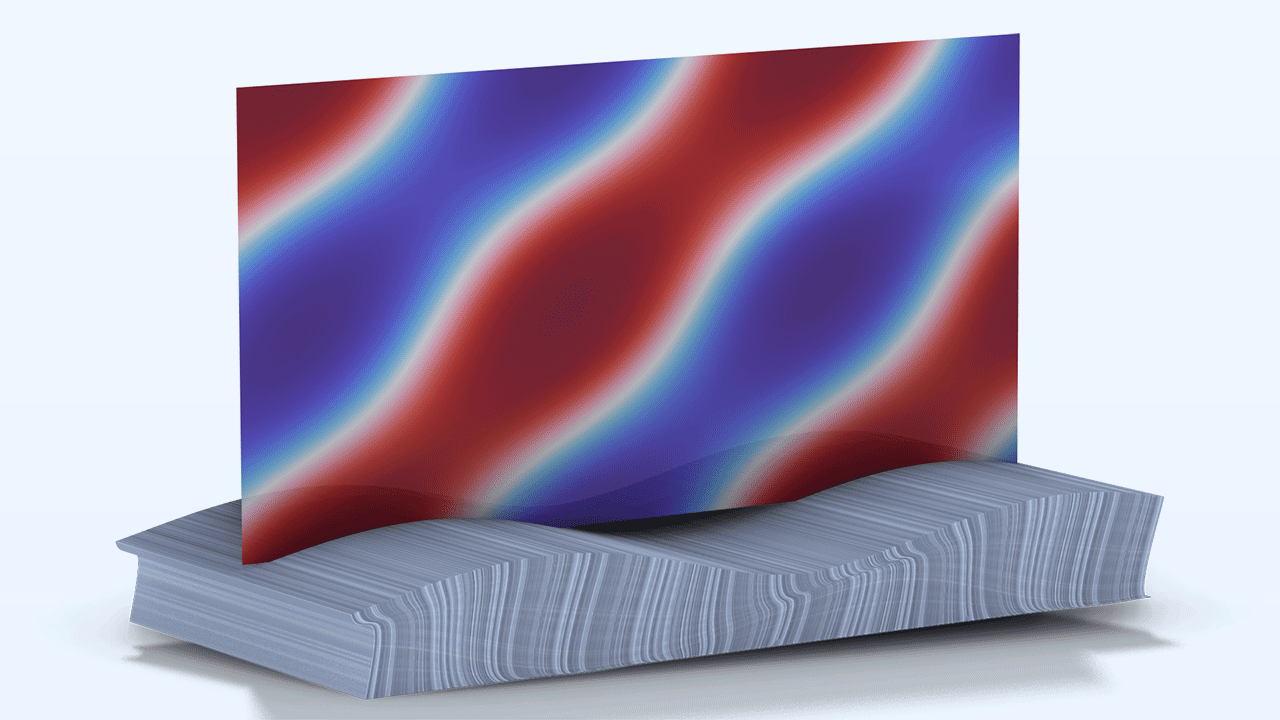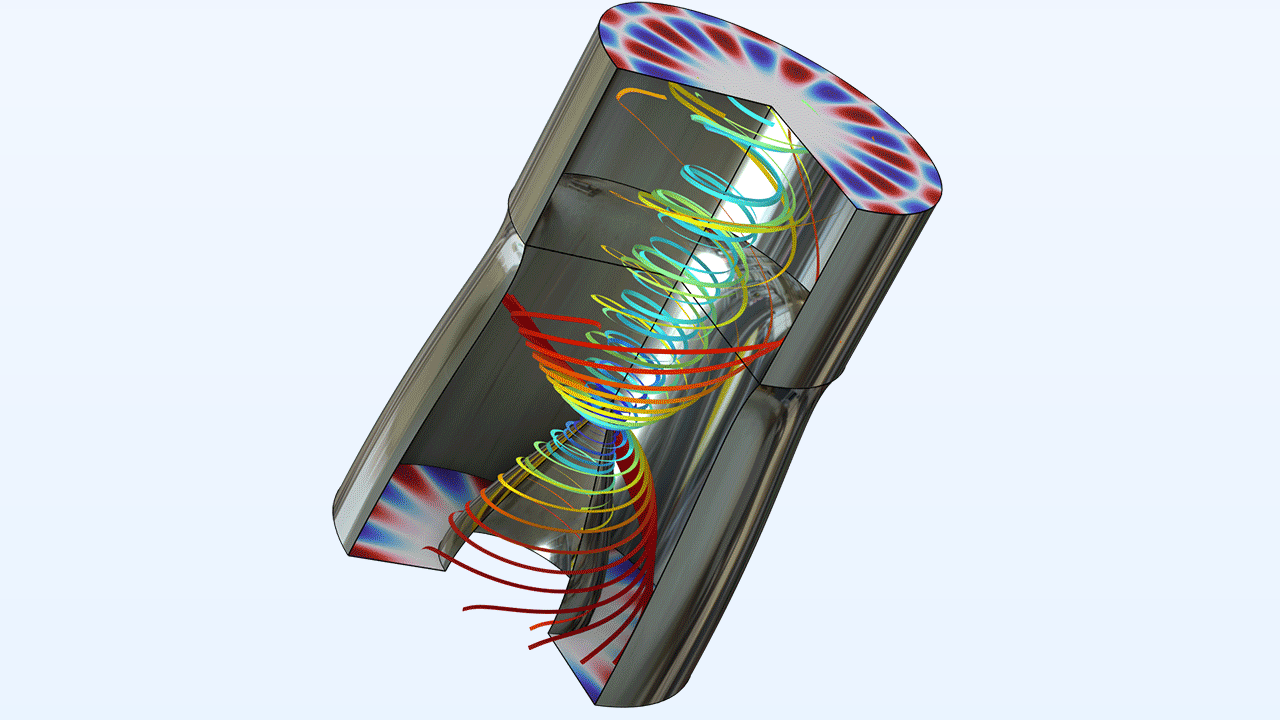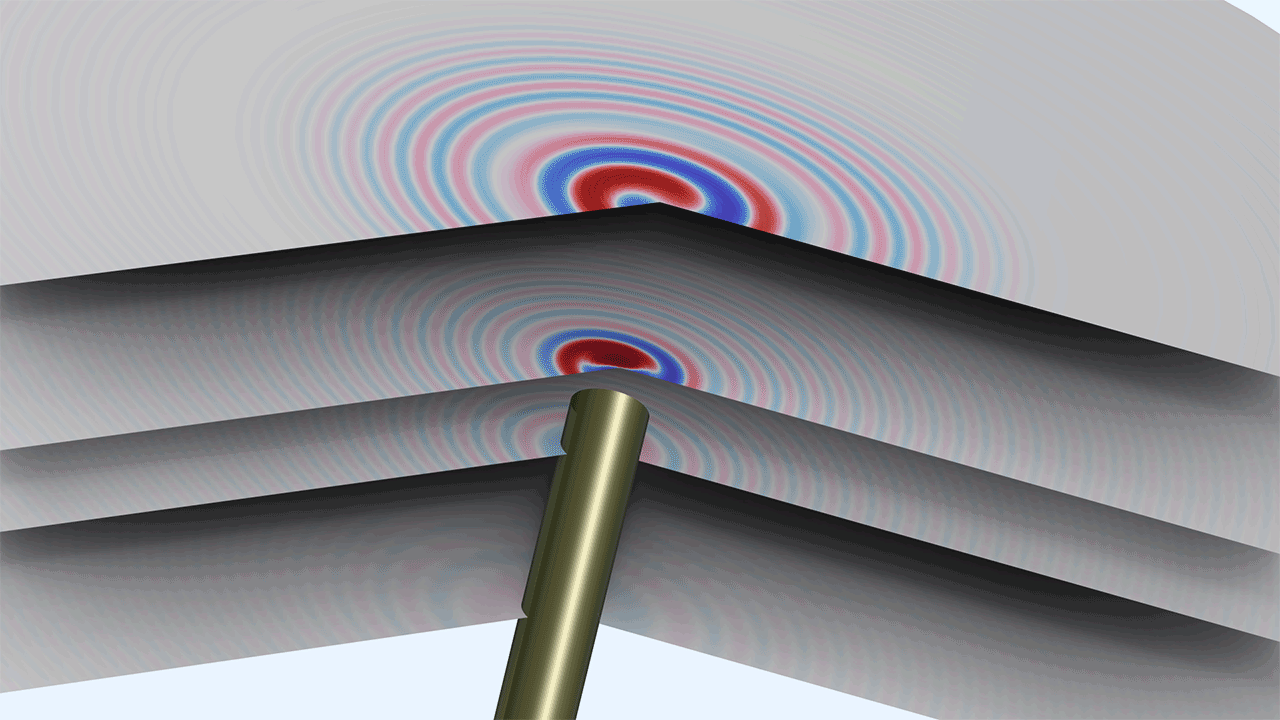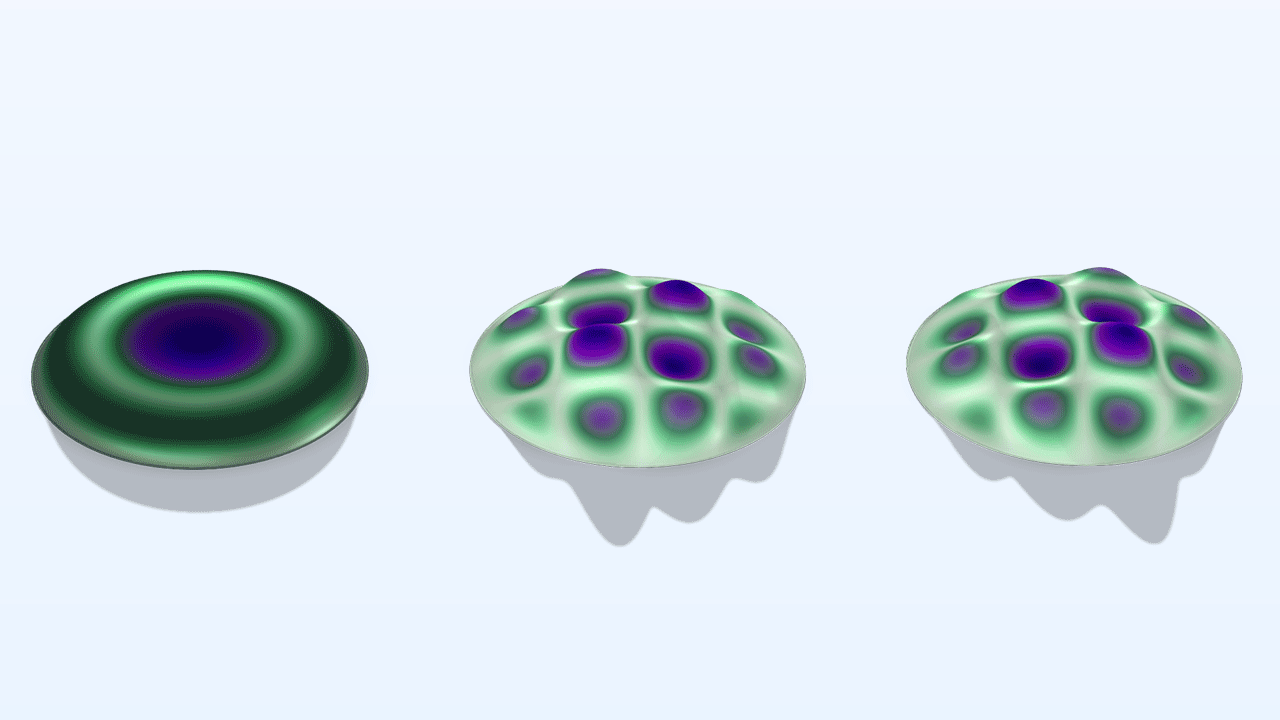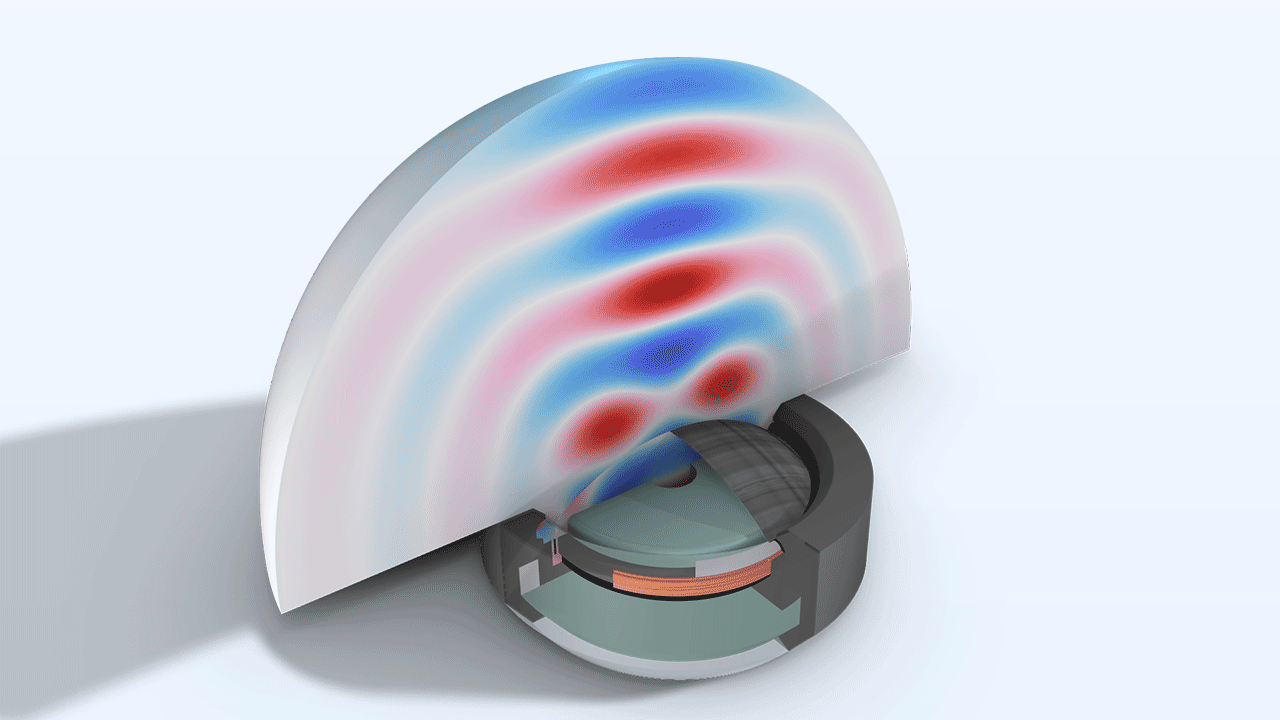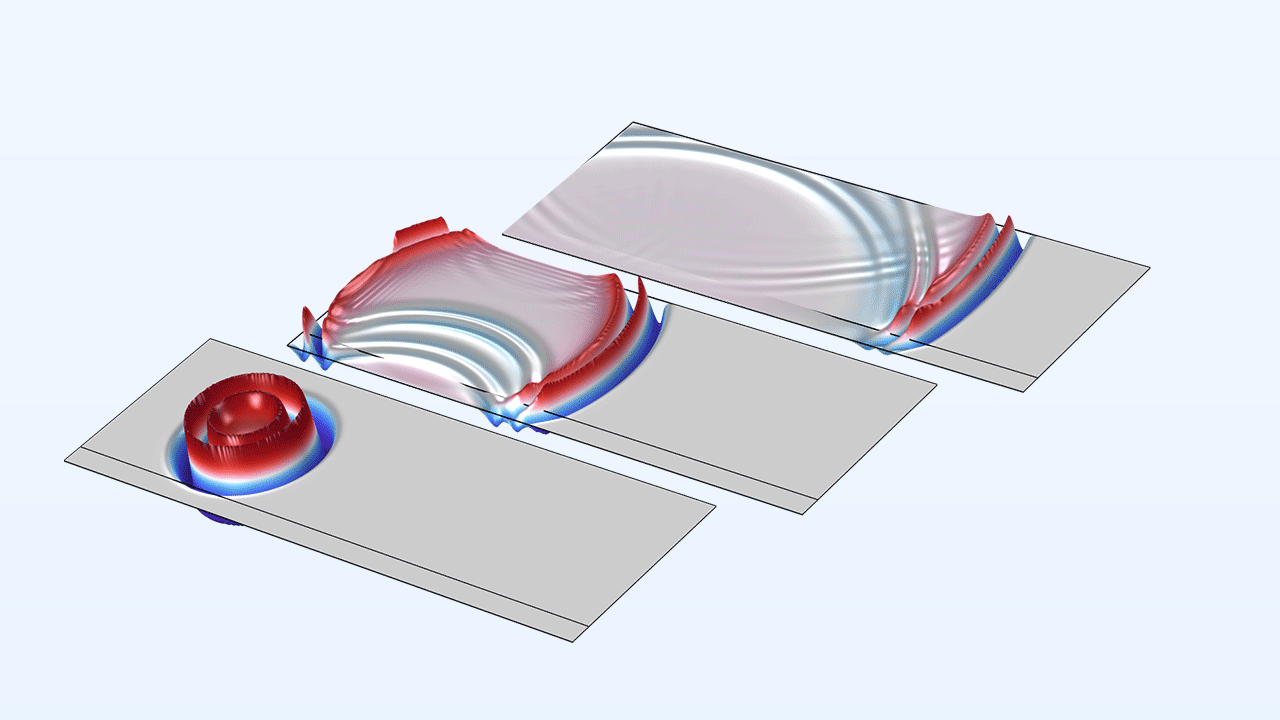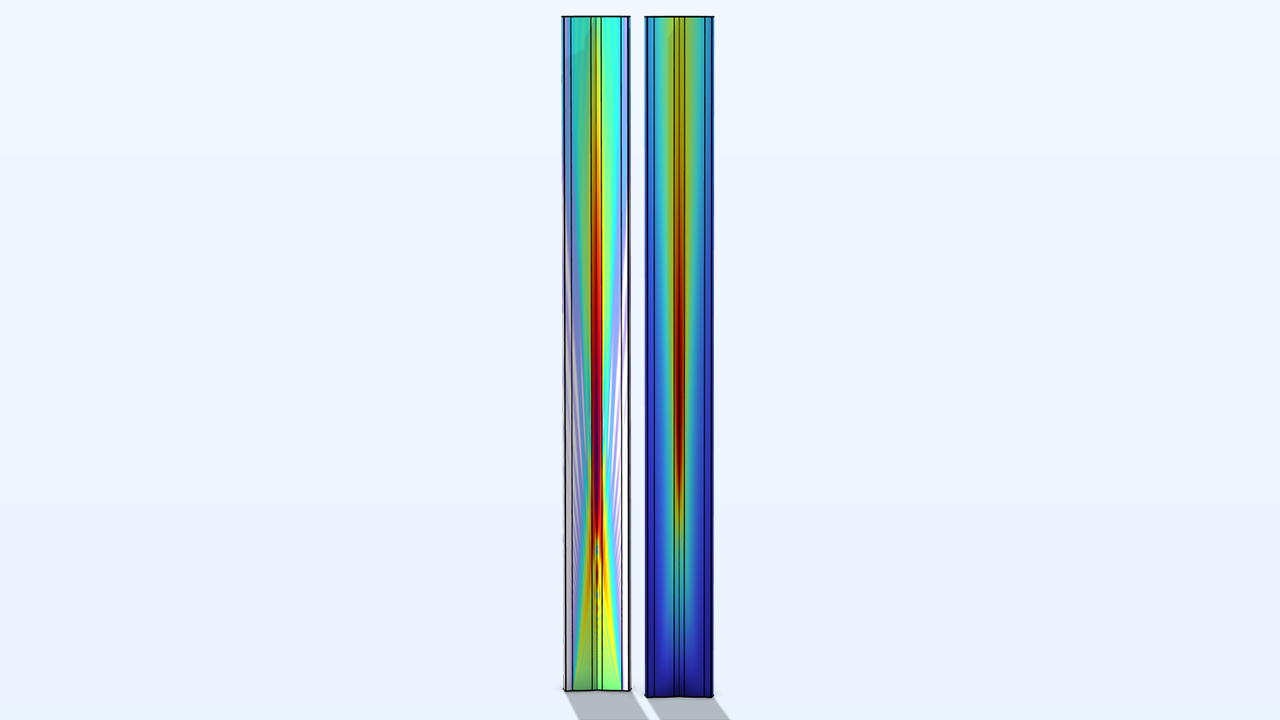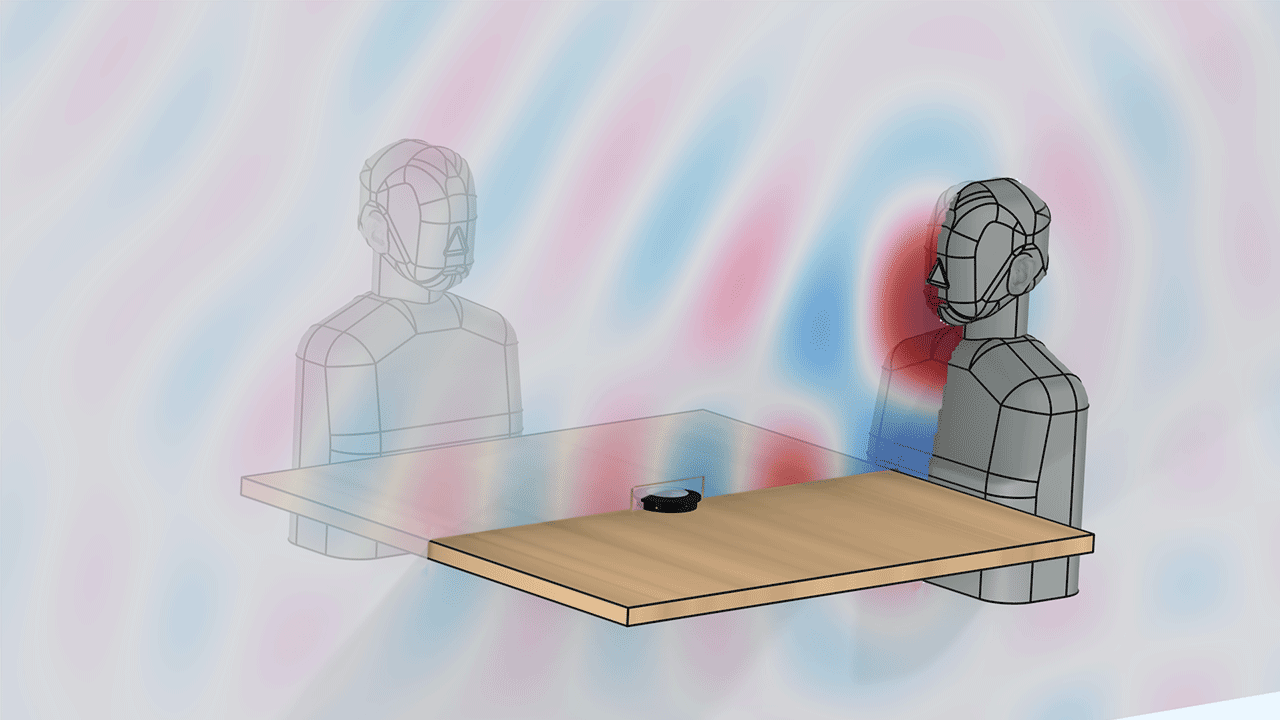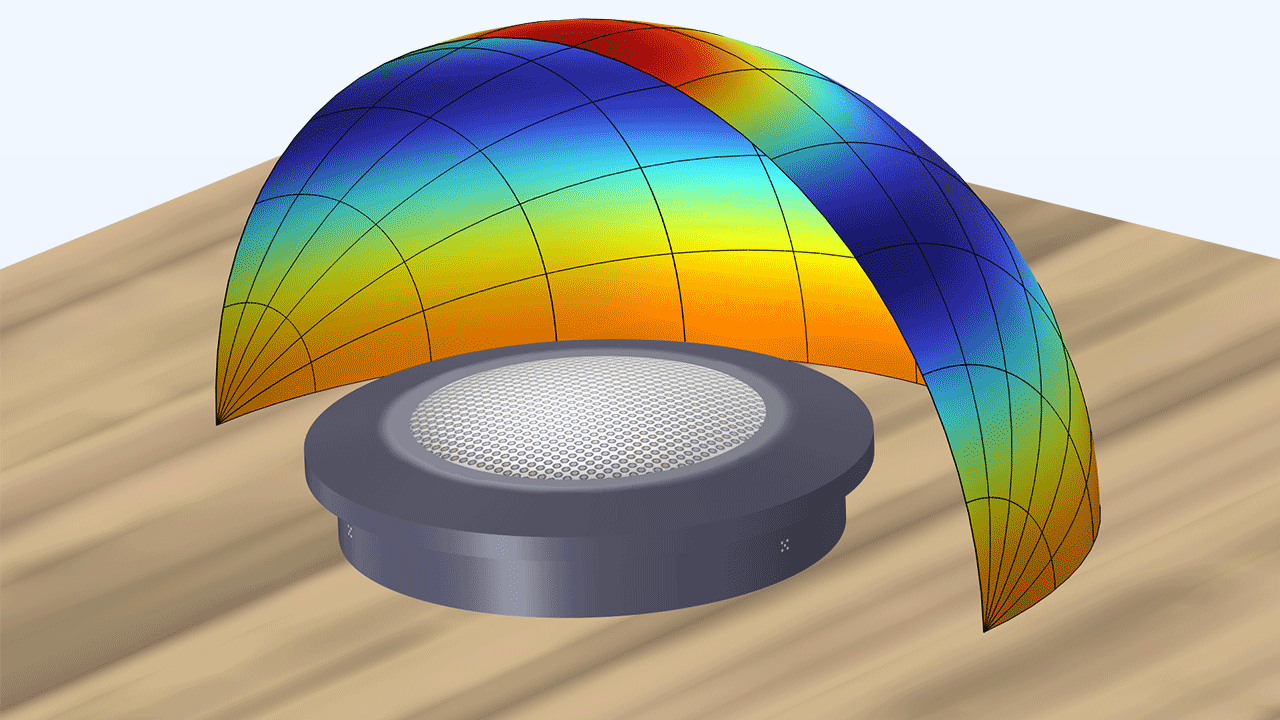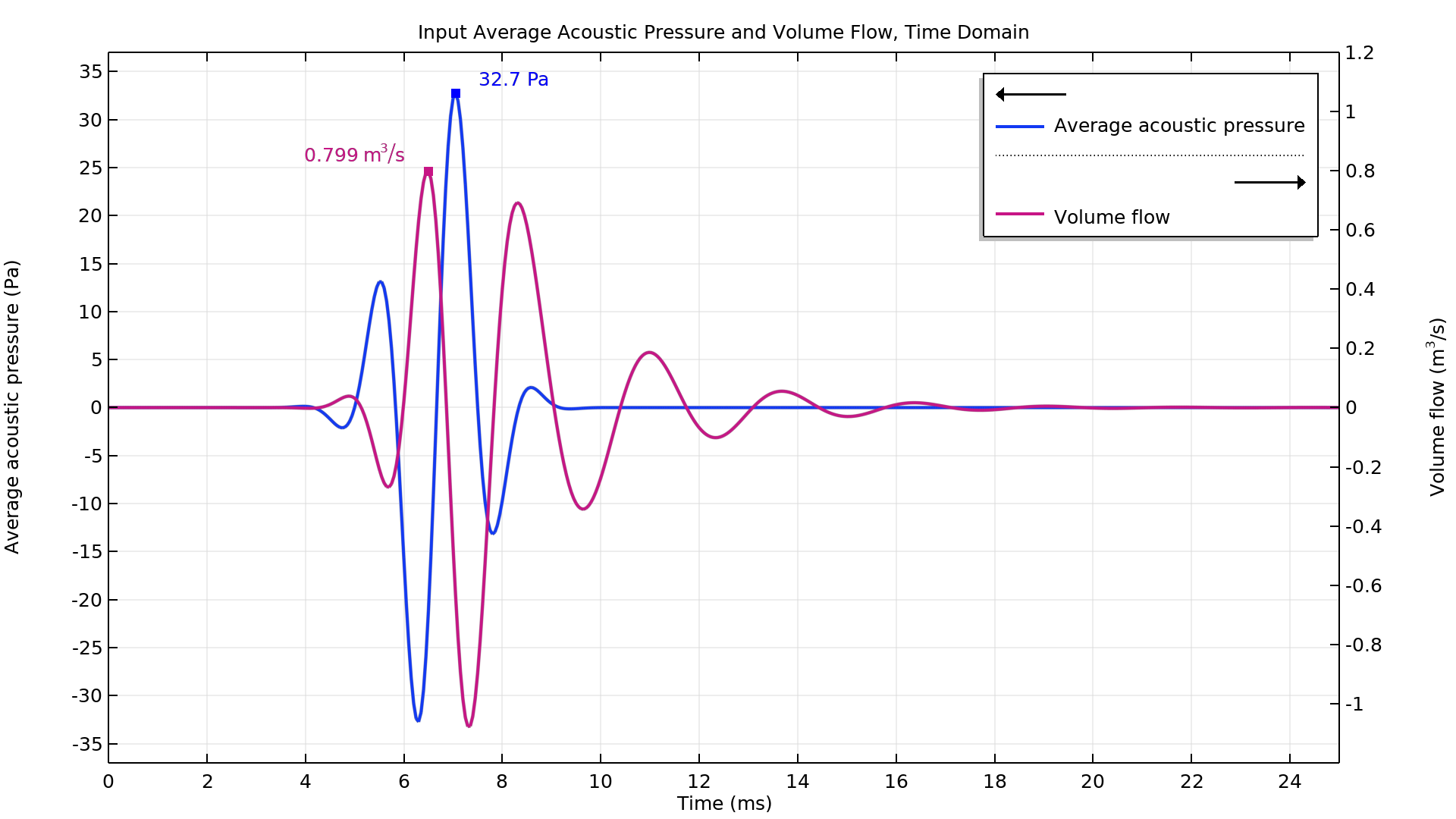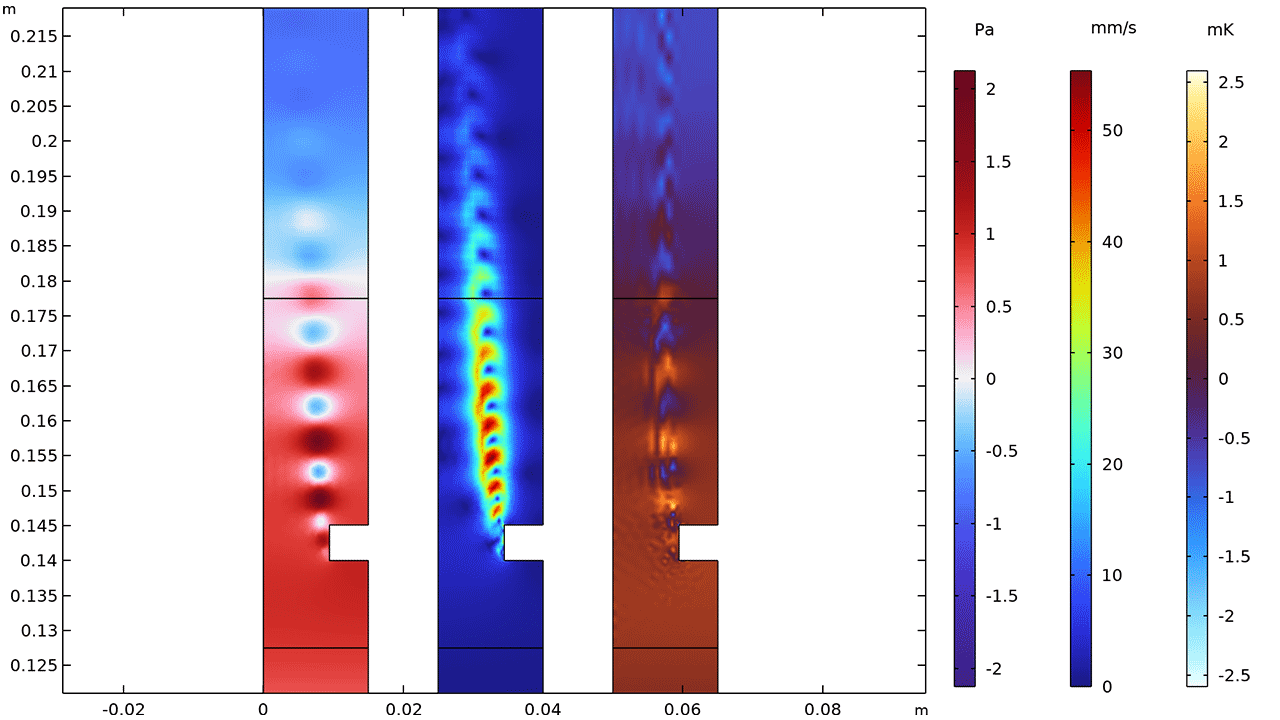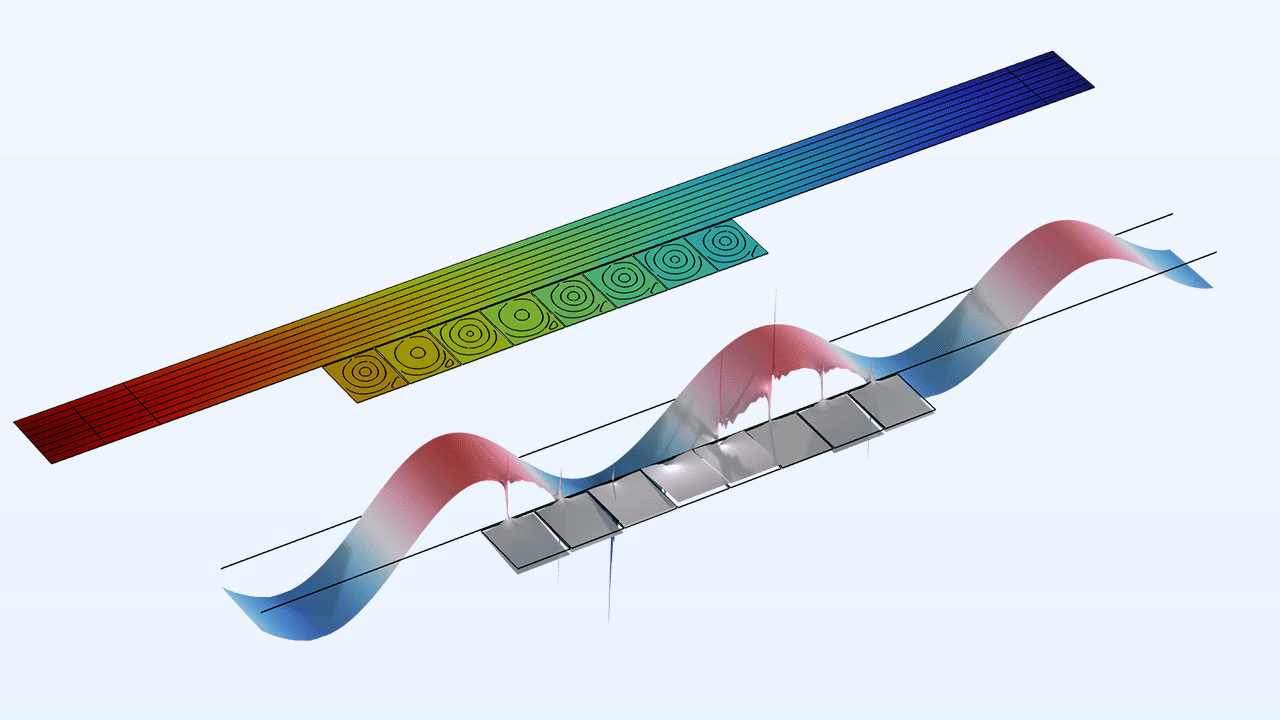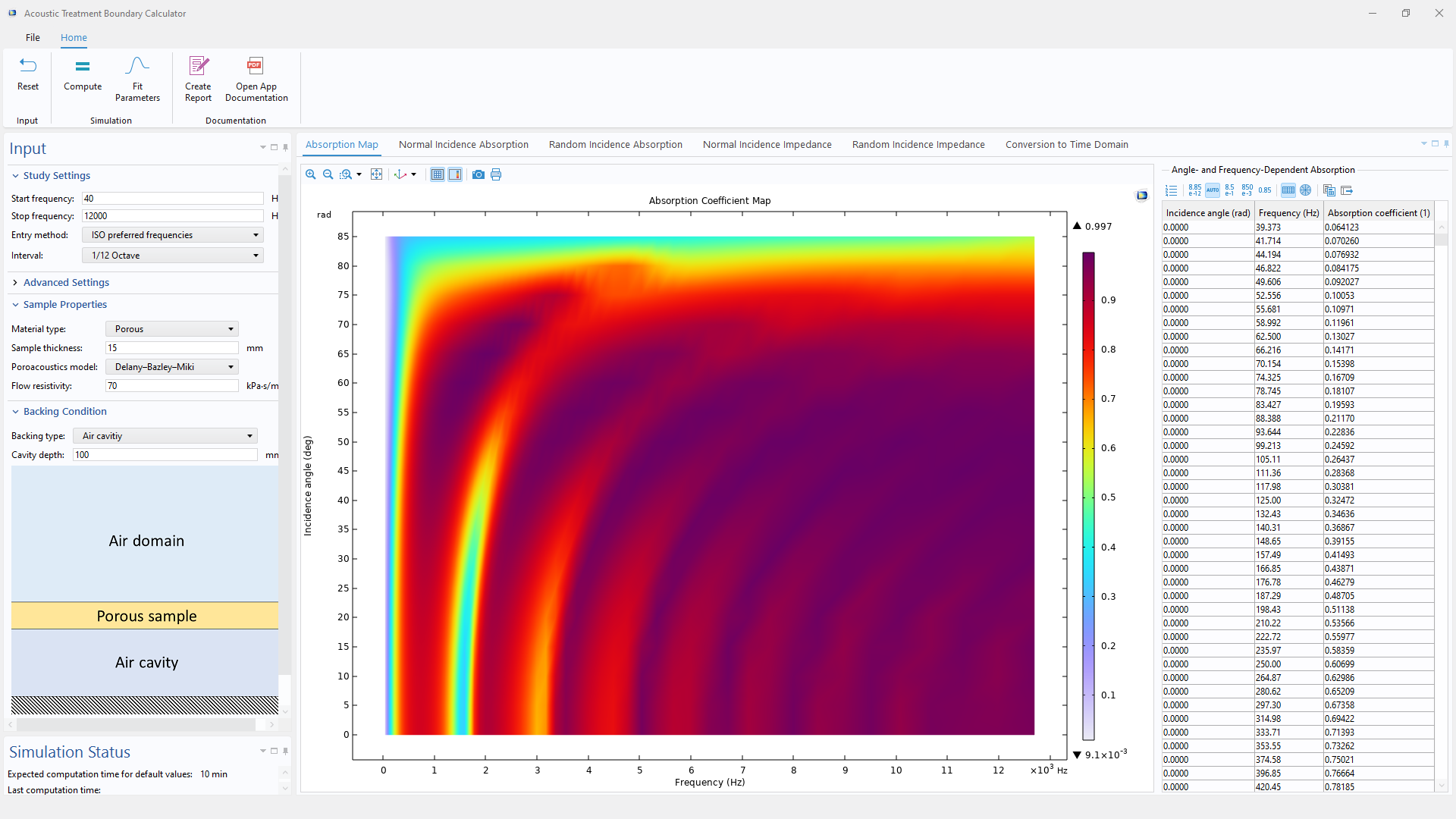Acoustics Module Updates
GPU Support for Accelerated Time-Explicit Pressure Acoustics Simulations
An accelerated solver has been added to the Pressure Acoustics, Time Explicit interface. When the solver's options for GPU support are selected, the acceleration can be significantly increased. A NVIDIA® card is required for this acceleration, and when the problem fits within the GPU’s memory, there can be speedups of up to 25x compared to using multicore CPUs. Key features — such as the general Impedance condition for applying real impedance data of absorbing surfaces and the Absorbing Layer feature for modeling open domains — are compatible with the GPU-accelerated solver. The following tutorial models demonstrate this new functionality:
Time-Domain Poroacoustics and Anisotropic Pressure Acoustics
A new Poroacoustics feature has been added to the Pressure Acoustics, Time Explicit interface, enabling time-domain modeling of porous materials using an equivalent fluid model. This feature uses the improved Partial Fraction Fit function to convert frequency-dependent data for equivalent density and compliance to the time domain via a rational function approximation. Any properly fitted poroacoustic model can now be used in the time domain.
Additionally, a new Anisotropic Poroacoustics model is available in the Pressure Acoustics, Frequency Domain interface, supporting anisotropic properties for flow resistivity, tortuosity, and viscous characteristic length in poroacoustic materials.
Examples of using the Poroacoustics feature and Anisotropic Poroacoustics model can be found in the Porous Absorber with Local and Extended Reacting Approximations for Time-Domain Modeling and Anisotropic Porous Absorber tutorial models, respectively.
Faster Formulation of Thermoviscous Acoustics
The new Thermoviscous Acoustics, SLNS Approximation interface solves for the propagation of acoustic waves, using the sequential linearized Navier–Stokes (SLNS) approximation to include the thermoviscous boundary layer losses in a computationally efficient manner. The interface solves the governing equations in the frequency domain and is particularly suited for simulations of large systems. The Generic 711 Coupler — An Occluded Ear-Canal Simulator model showcases this interface.
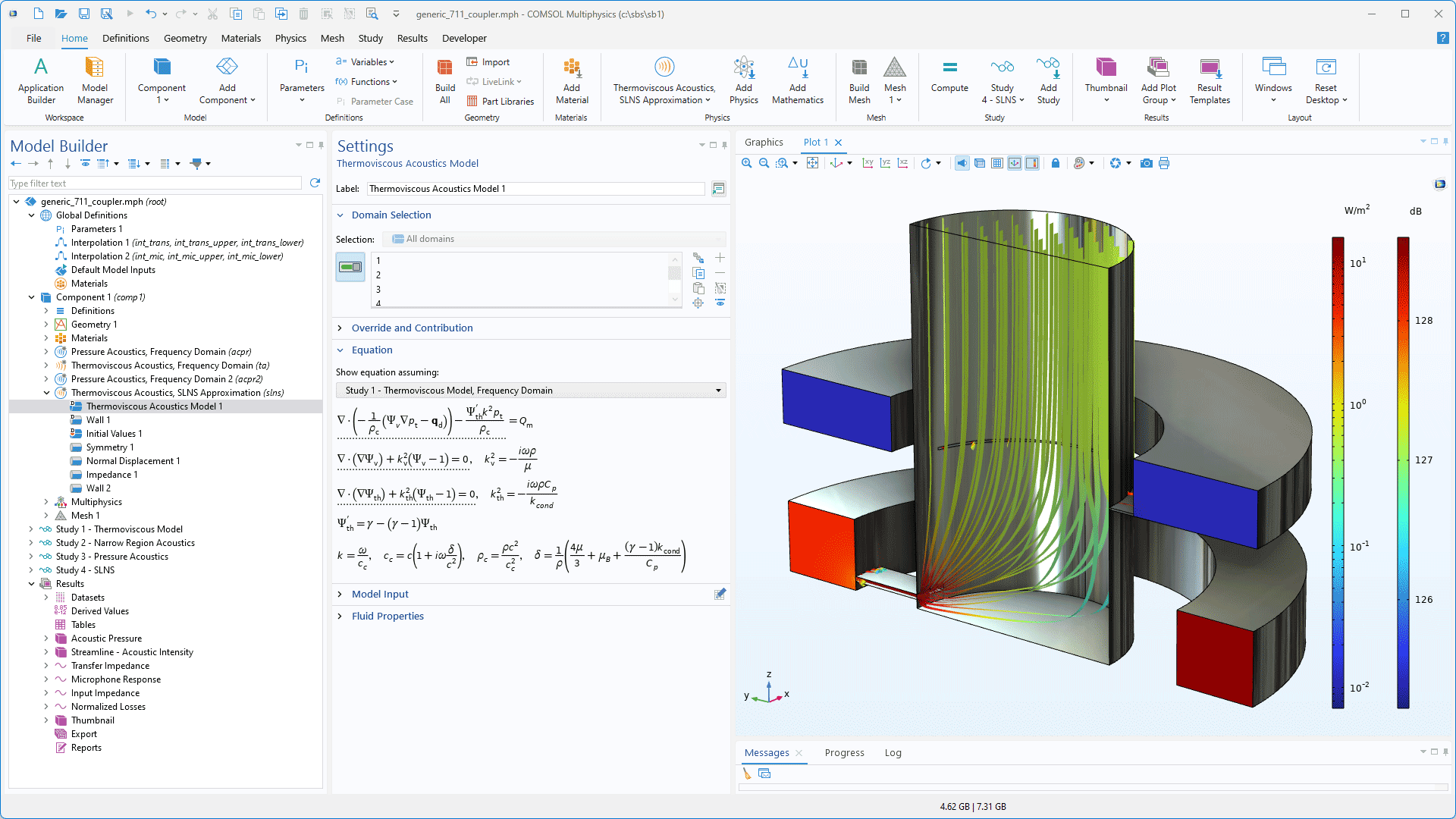
New Functionality for Pressure Acoustics in the Frequency Domain
The following interior impedance models have been added to the Pressure Acoustics, Frequency Domain interface: Thin plate, Membrane, Porous mass layer, and Perforated plate. These models, also known as "transfer impedance models", are available for the Interior Impedance, Pair Impedance, and Impedance conditions in the Acoustic BEM-FEM Boundary coupling. The use of a new impedance model can be seen in the Target Strength of Submarine with Outer Hull Using FEM-BEM tutorial model.
Additionally, the Port condition now features a built-in Annular port option for annular geometries. Both the Circular and Annular ports can define Azimuthal angle dependency as Sine or Cosine to add orthogonal modes for given azimuthal mode numbers. Use of the updated Port condition functionality can be seen in the Absorptive Muffler tutorial model.
Electromechanics Multiphysics Coupling for Membranes and Shells
The new Electromechanics, Shell and Electromechanics, Membrane interfaces simplify the modeling of thin structure deformations, such as microphone membrane deformations, influenced by electrostatic forces. These interfaces automatically include the Electromechanics, Boundary multiphysics coupling for seamless integration with shell or membrane elements, and they use the Electrostatics interface to model an electric field. These interfaces require the AC/DC Module or MEMS Module in addition to the Structural Mechanics Module.
This new multiphysics functionality can be integrated into acoustics simulations involving thin structures. For example, the use of the Electromechanics, Boundary coupling is demonstrated in the Brüel & Kjær 4134 Condenser Microphone and Axisymmetric Condenser Microphone tutorial models.
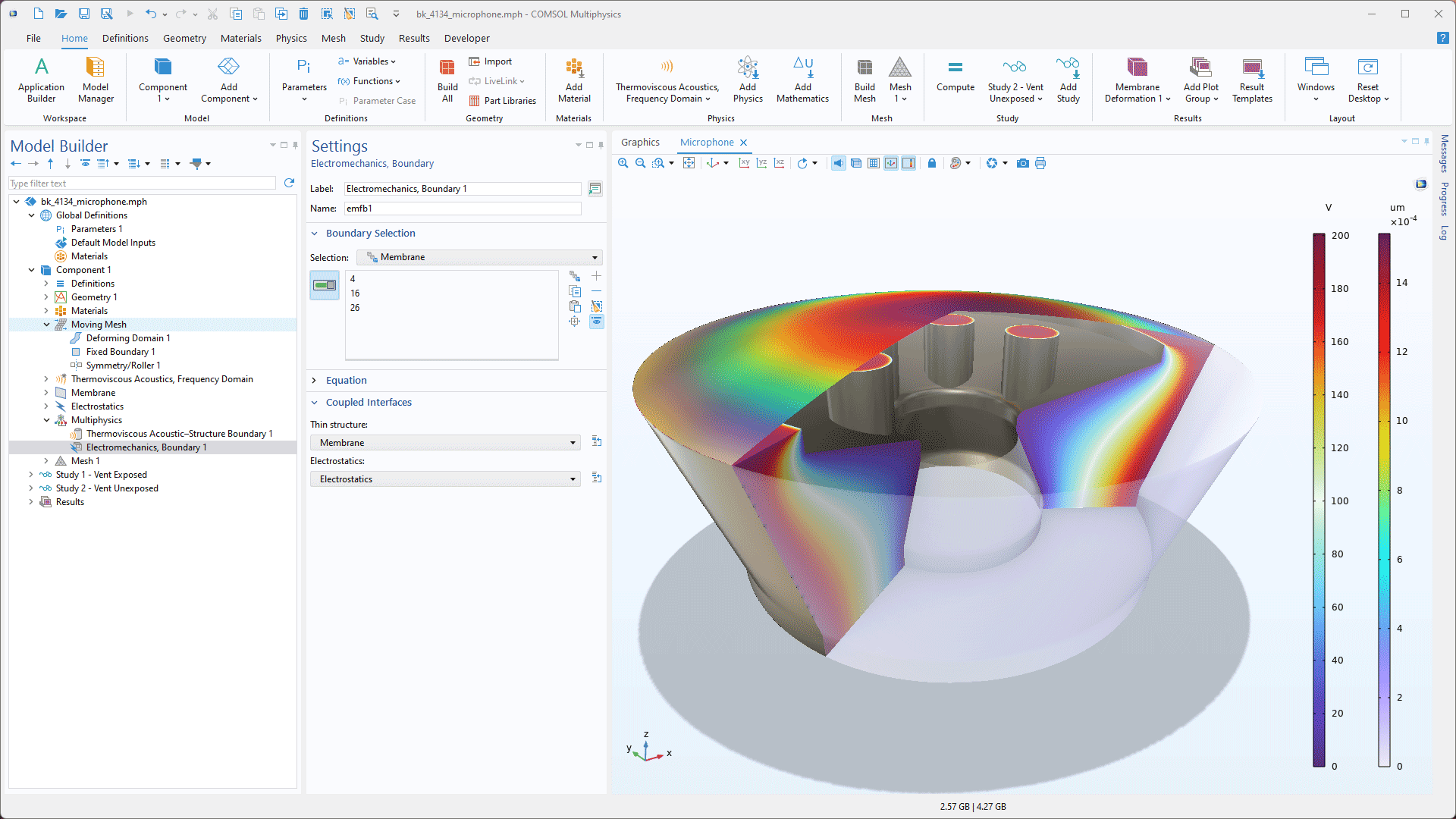
Analytical Port Modes for Aeroacoustic Modal Source Expansion
Standard analytical port mode options have been added to the Port condition in the Linearized Potential Flow, Frequency Domain interface, with built-in options for both Annular and Circular port modes. These options simplify model setup, particularly for modal expansion of measured aeroacoustic sources and when calculating modal transmission loss in flow ducts. The following tutorial models showcase this new addition:
New and Updated Tutorial Models
COMSOL Multiphysics® version 6.3 brings several new and updated tutorial models to the Acoustics Module.
Car Cabin Acoustics — Transient Analysis
Acoustics of an Open-Plan Office Space
Full-Ear Hearing Aid
Anisotropic Porous Absorber
Flow Duct
Sound Radiation from a Circular Duct with Flow
Dome Tweeter with Composite Diaphragm — Eigenfrequency Analysis
Dome Tweeter with Composite Diaphragm — Frequency-Domain Response
Porous Absorber with Local and Extended Reacting Approximations for Time-Domain Modeling
Diesel Particulate Filter Analysis Using an Acoustic Transfer Matrix
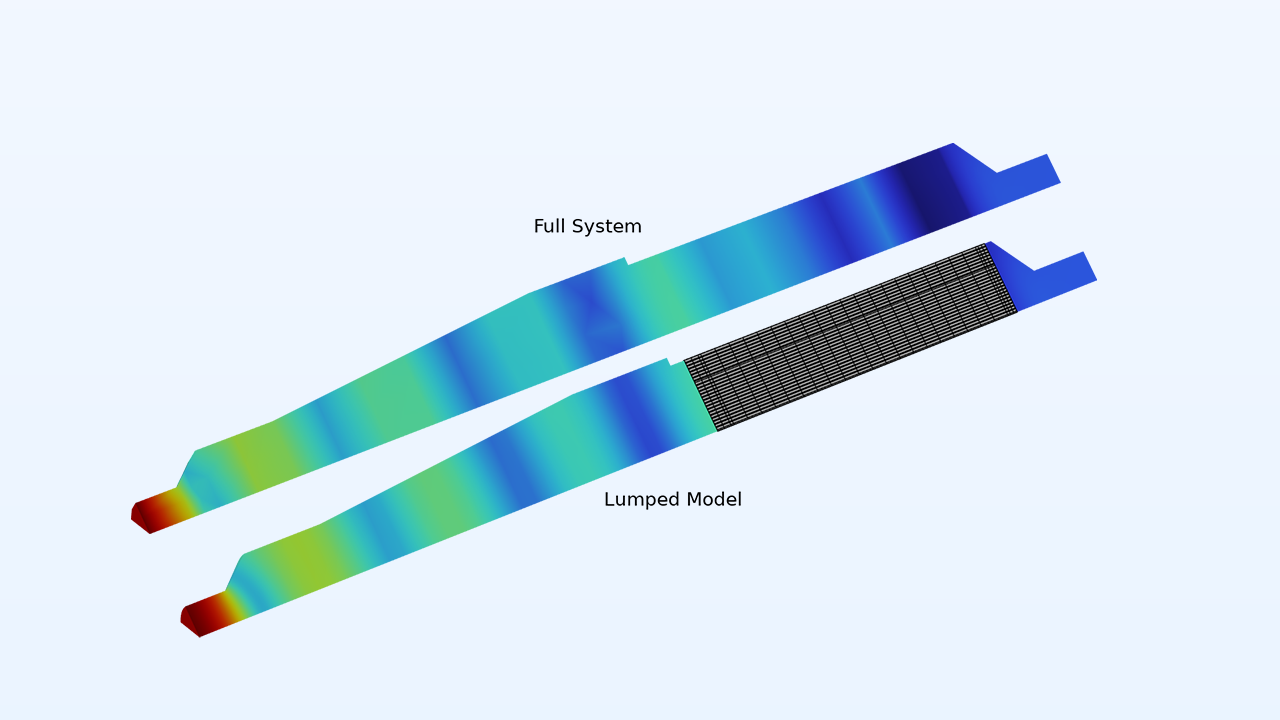
diesel_particulate_filter_transfer_matrix
Download from the Application Gallery
Acoustic Streaming Induced by a Focused Ultrasound Beam
Conference Speaker Virtual Test Setup
Conference Speaker System
Input Impedance of a Tube and Coupler Measurement Setup: Time-Domain MOR Using Partial Fraction Fit
Whistling Potential of an In-Duct Orifice in the Presence of Flow
Acoustic Liner with a Grazing Background Flow
Midwoofer Harmonic Distortion Analysis with KLIPPEL Measurements
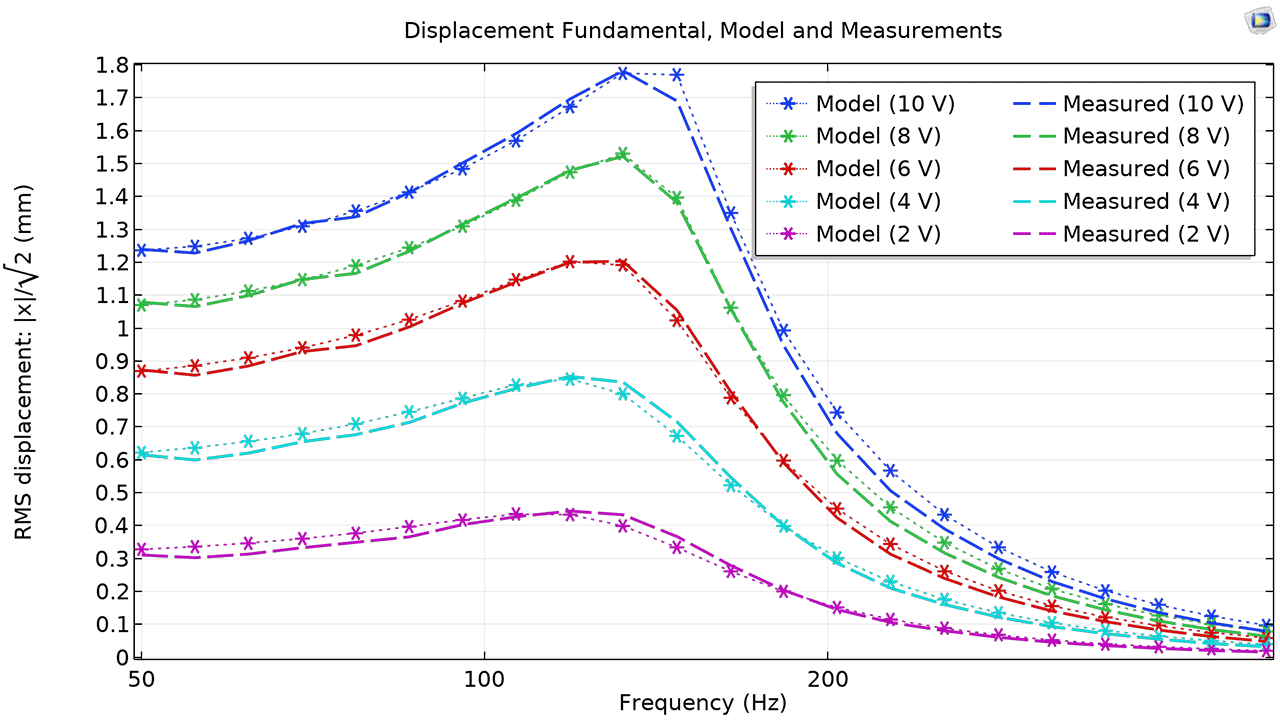
KLIPPEL is a registered trademark of Wolfgang Klippel.

